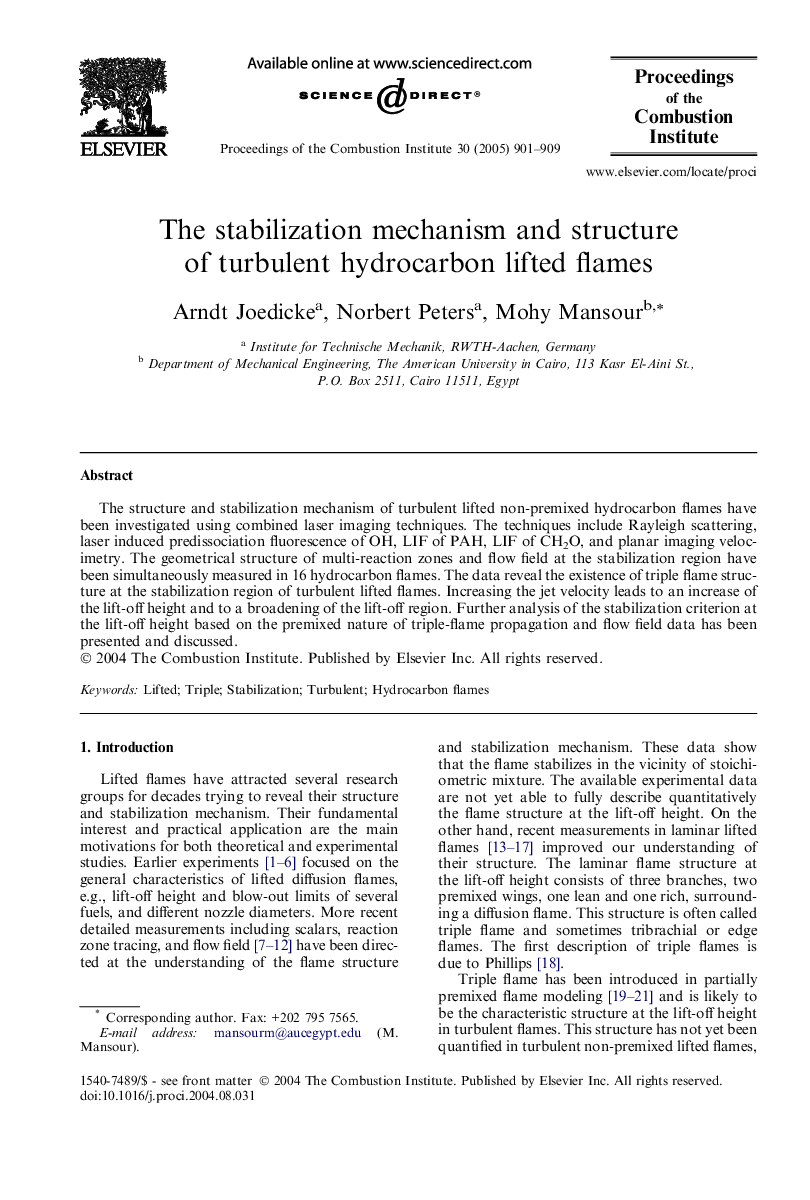| Article ID | Journal | Published Year | Pages | File Type |
|---|---|---|---|---|
| 9637417 | Proceedings of the Combustion Institute | 2005 | 9 Pages |
Abstract
The structure and stabilization mechanism of turbulent lifted non-premixed hydrocarbon flames have been investigated using combined laser imaging techniques. The techniques include Rayleigh scattering, laser induced predissociation fluorescence of OH, LIF of PAH, LIF of CH2O, and planar imaging velocimetry. The geometrical structure of multi-reaction zones and flow field at the stabilization region have been simultaneously measured in 16 hydrocarbon flames. The data reveal the existence of triple flame structure at the stabilization region of turbulent lifted flames. Increasing the jet velocity leads to an increase of the lift-off height and to a broadening of the lift-off region. Further analysis of the stabilization criterion at the lift-off height based on the premixed nature of triple-flame propagation and flow field data has been presented and discussed.
Keywords
Related Topics
Physical Sciences and Engineering
Chemical Engineering
Chemical Engineering (General)
Authors
Arndt Joedicke, Norbert Peters, Mohy Mansour,
